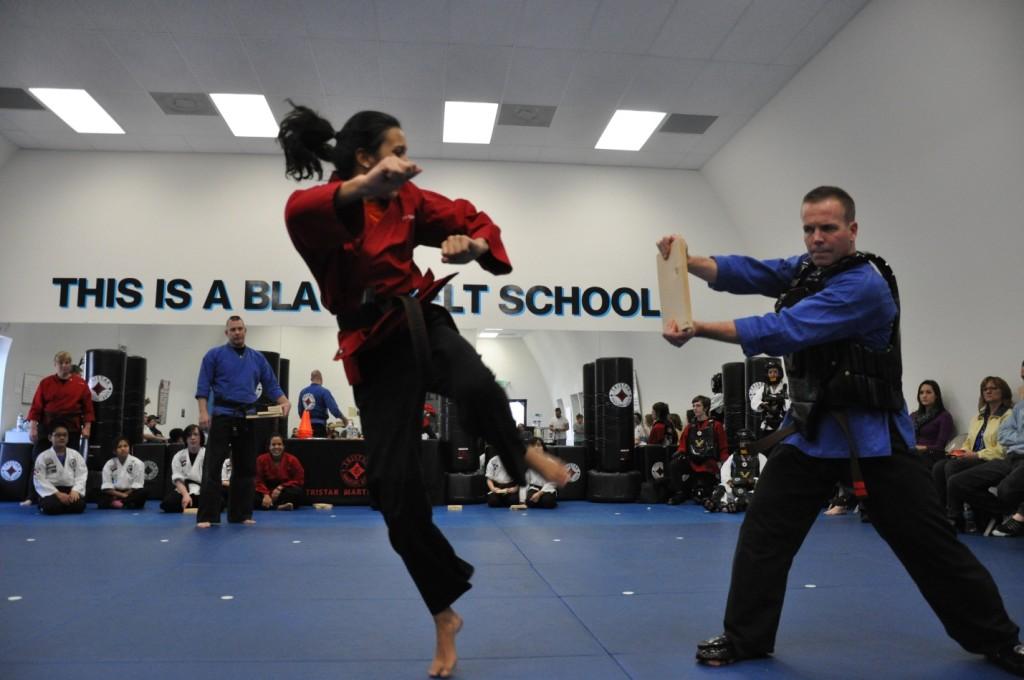Martial arts: More than just KAR-A-TEE
October 1, 2013
Picture Spongebob doing KAR-A-TEE, The Karate Kid and the famous phrase “Wax on, wax off,” or Bruce Lee driving his head into a cinderblock. Although these pop culture references seem compelling, there’s more to martial arts than just “karate chops.” Martial arts involves the body, the mind, and commitment.
“It’s not easy. You have to go through all 11 belts, white through red/black, for hapkido, and then prepare months in advance for your black belt test,” said black belt sophomore Patrick McNally.
There are variations of martial arts that are practiced throughout the world, such as hapkido, budo tijitsu, Karate, and plenty more.
“I started when I was nine years old,” said McNally. McNally practices the art hapkido which is described as a Korean martial art involving kicking and circular movements.
“They do not accept anything but the best out of you. For me, it was not easy,” McNally said.
Hapkido is the way of coordinated power. Hapkido isn’t about fighting or beating others; it is about defending oneself and using the opponent’s power to advantage instead of just “full on punching them.”
“You use the other person’s power to your advantage instead of using yours. I think it is smart and cool how they thought of that,” said McNally
Natalya De La Cruz, a senior who earned her black belt, practices the art of Budo Tijitsu. This involves a practical, natural, “real fighting,” and philosophical martial arts system. Budo Tijitsu was founded by the Warriors of Japan (Samurais and Ninjas).
“To get a black belt, it takes a lot of dedication because it takes many years. You also have to know your forms and practice a ton,” Cruz said.
Many think that martial arts is cool because it involves fighting and beating people up, but Cruz disagrees, “you’re taught to only use your martial arts when your life and safety of others are in danger. Also, when we practice, we have to be able to hold back some, and not hurt your partner. My instructor always says ‘partners not opponents.’”
Mike Kline of Mount Airy HiYa Karate said that martial arts had a psychological side. “We especially help kids with ADHD, Asperger, and other mental illnesses by giving them more attention. Inside the dojo, we help them with their confidence, focus, and their ability to do things they wouldn’t normally try to do.”
“The idea of kicking and punching things looks fun to them. By almost allowing them to think they’re doing one thing, they’re helping kids to interact with others and focus,” said Kline.







